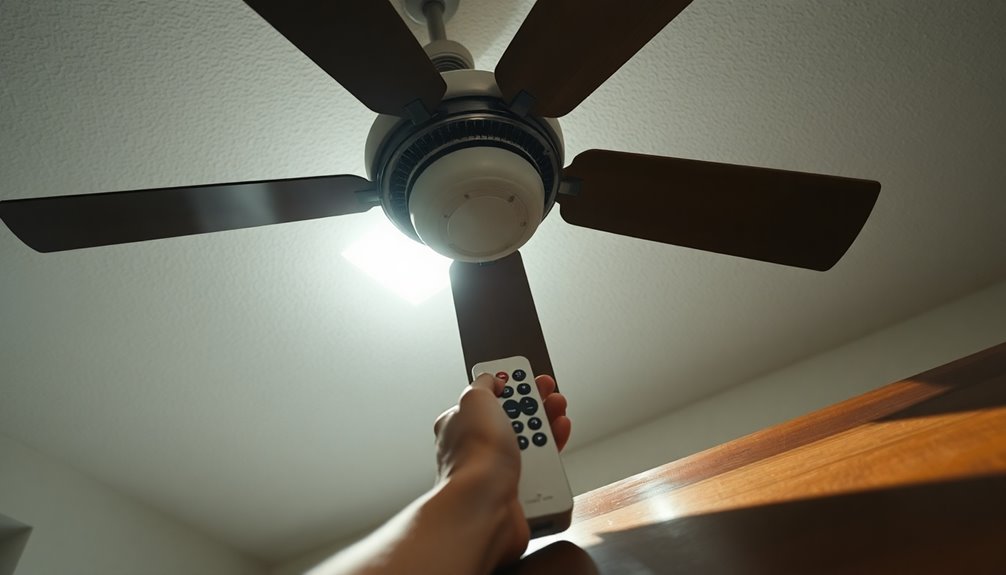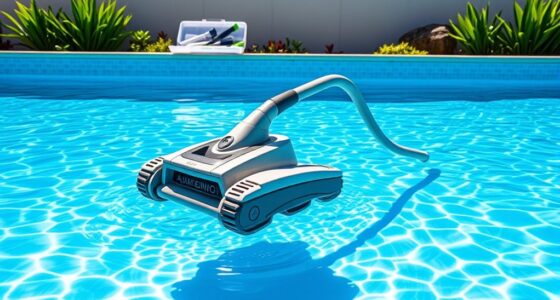If your ceiling fan's running slow, you're likely facing common issues. Start by checking for dirt and debris buildup on the blades or motor, which can create friction. A faulty capacitor could also limit speed, so inspect that too. Wobbling blades from damage or misalignment can affect airflow, so make sure they're balanced. Don't forget to tighten any loose screws and lubricate the motor annually for peak performance. If these tips don't help, there might be electrical issues at play. Uncovering the right solutions can greatly improve your fan's efficiency and airflow—there's more to explore for peak performance.
Key Takeaways
- Check for a faulty capacitor, as it can significantly reduce power transfer and fan speed.
- Clean dirt and debris from motor bearings to decrease friction and improve airflow.
- Inspect and tighten screws to prevent wobbling, ensuring the fan operates at designed speeds.
- Lubricate motor bearings annually to maintain smooth operation and optimal RPM.
- Test electrical connections and switches to ensure proper power supply to the fan.
Common Causes of Slow Fans
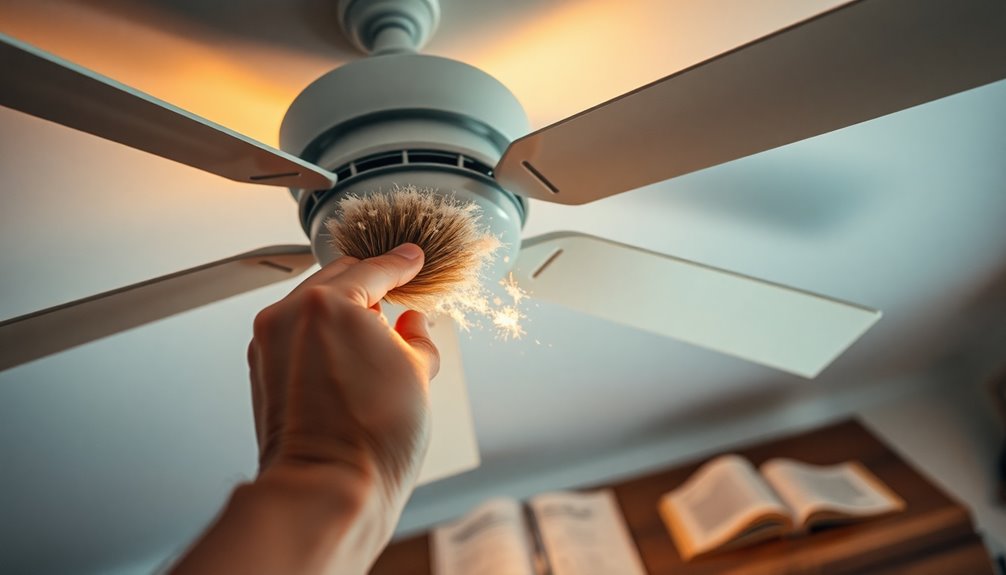
When your ceiling fan starts to slow down, it can be frustrating, especially on hot days. One common cause is a faulty capacitor, which affects power transfer to the motor, leading to over 90% of ceiling fan problems.
Accumulated dirt and debris in the motor bearings can also reduce speed, as worn bearings create friction. Additionally, wobbling blades—whether damaged or misaligned—hinder peak airflow and efficiency.
Loose screws or improper installation can further impede performance, preventing the fan from reaching its designed speed.
Finally, lack of lubrication in the motor and mechanical parts may result in reduced speed or failure. Regular maintenance is key to avoiding these issues and ensuring your fan operates at its best. Additionally, just like in heat pumps, the proper installation of ceiling fans is crucial for maximizing performance and efficiency.
Measuring Ceiling Fan Speed
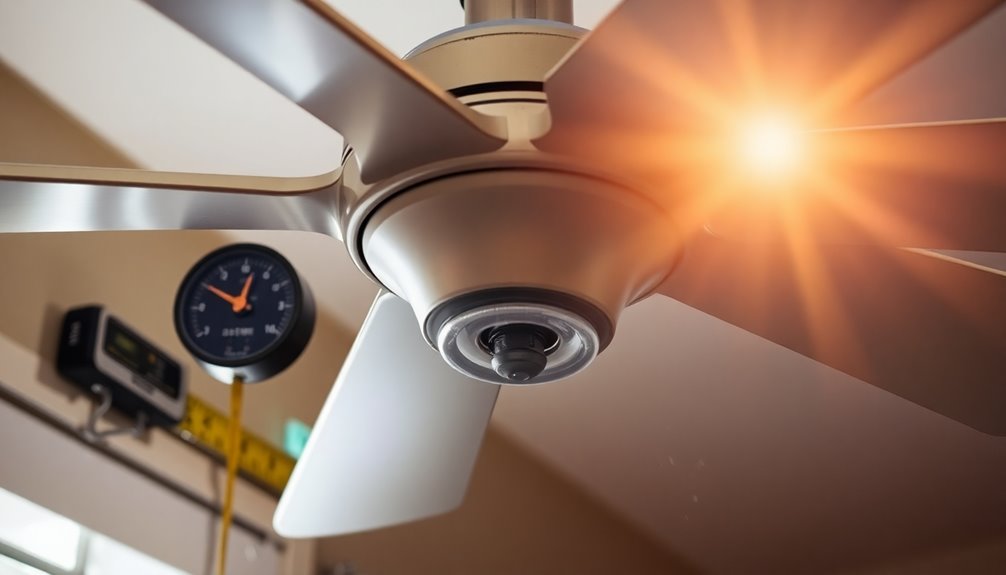
If your ceiling fan is running slowly, measuring its speed can help diagnose the issue. Understanding your ceiling fan speed, typically expressed in RPM, is essential for troubleshooting airflow problems.
Here's what to think about:
- Average speeds for standard models range from 50 to 100 RPM.
- Ideal RPM for a 48-inch fan is between 315 and 365.
- High-speed ceiling fans exceed 350 to 400 RPM for superior airflow.
- Use a handheld tachometer for accurate RPM readings during operation.
Improving Fan Performance
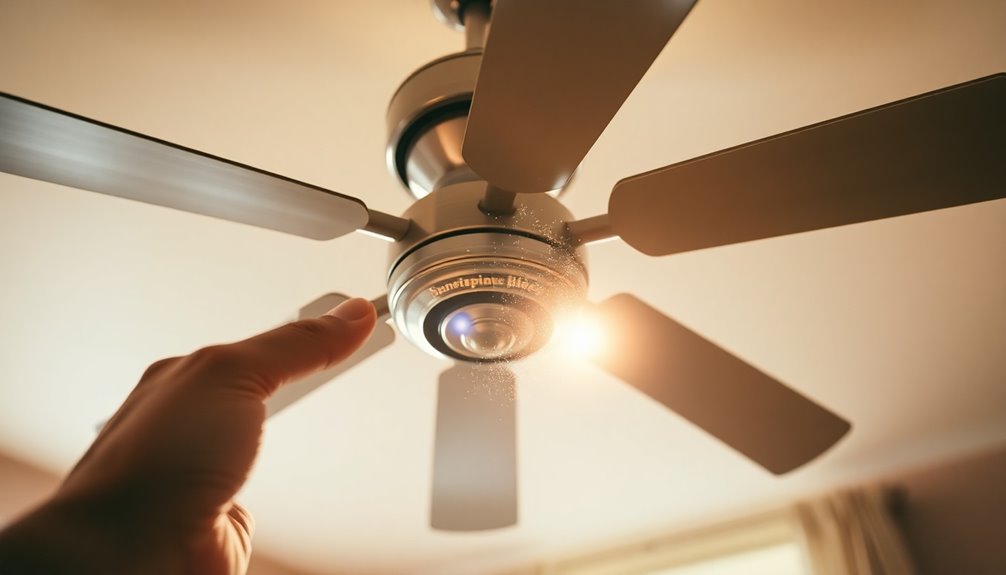
To enhance your ceiling fan's performance, regular maintenance is crucial.
Start by cleaning the blades with a damp cloth or pillowcase to prevent dust buildup that can hinder airflow.
If your fan is running slow, lubricate motor bearings annually to reduce friction and boost RPM.
Inspect the blades for balance; uneven or misaligned blades can cause speed issues and wobbling, so adjust the blades as necessary.
Check for capacitor issues, as faulty capacitors can prevent your fan from reaching ideal speeds.
Finally, verify the speed controller is compatible and functioning properly; an outdated controller might limit your fan's capabilities.
Follow these ceiling fan troubleshooting steps to improve airflow and efficiency.
Maintenance Best Practices
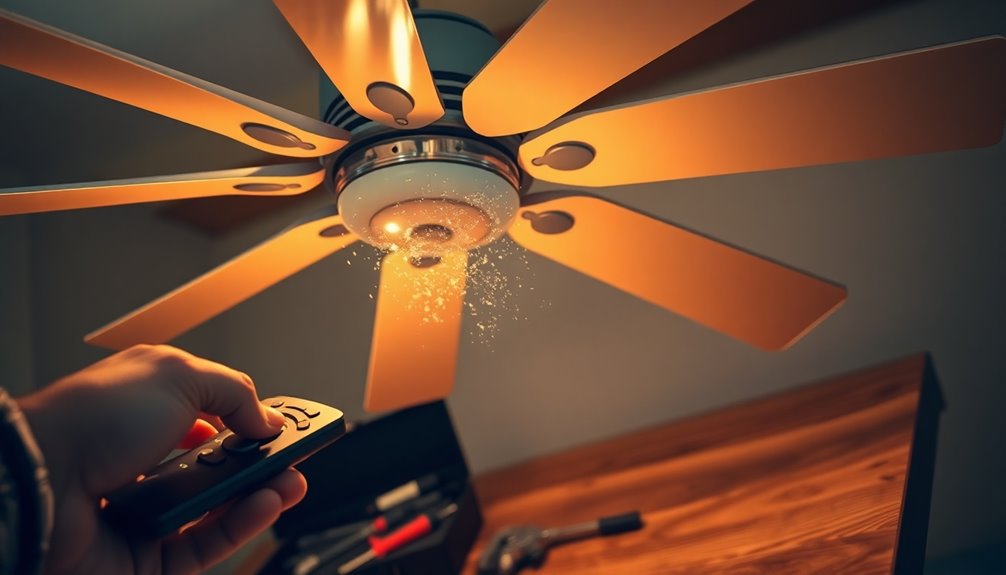
Regular maintenance is essential for keeping your ceiling fan running efficiently and quietly.
By following these best practices, you can improve performance and avoid issues like motor failure:
- Clean the ceiling fan blades regularly with a damp cloth to prevent dust buildup.
- Lubricate the motor bearings annually to guarantee smooth operation and minimize friction.
- Inspect and tighten all screws and connections to prevent wobbling and guarantee proper alignment.
- Balance the fan blades with a balancing kit if wobbling is observed, as misalignment can negatively affect airflow.
Additionally, adhering to maintenance routines can enhance energy savings and contribute to a more pleasant living environment.
Troubleshooting Electrical Issues
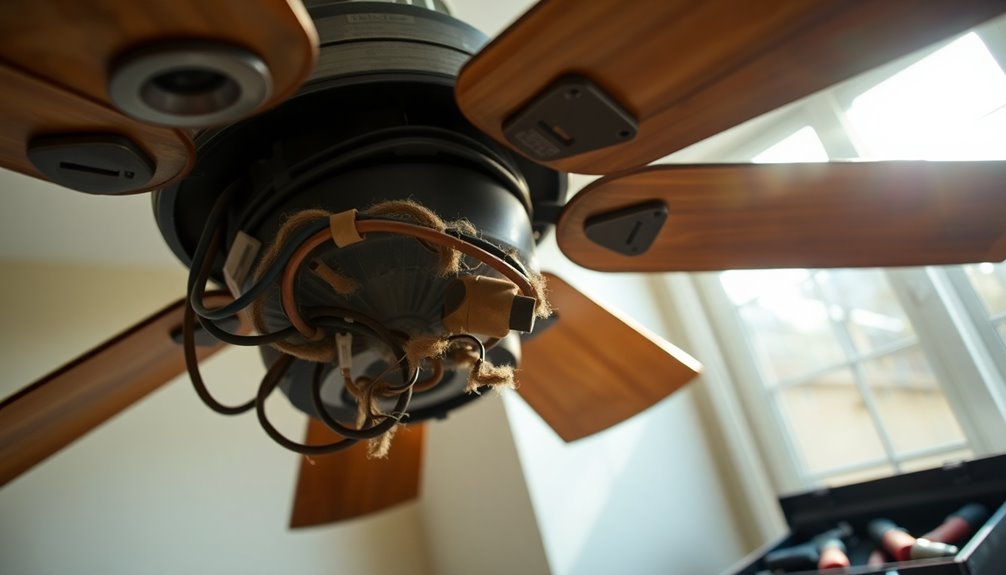
When your ceiling fan isn't working, it can be frustrating, but troubleshooting electrical issues can often resolve the problem quickly. Start by inspecting the circuit breaker for tripped switches or blown fuses, as these can disrupt the power supply. Check the wall switch for proper functionality and examine the wiring connections in the ceiling box for damage or loose wires.
Here's a quick reference table to help:
| Issue | Action |
|---|---|
| Tripped Circuit Breaker | Reset the breaker |
| Malfunctioning Switch | Replace or repair the switch |
| Damaged Wiring | Repair or replace wiring connections |
Finally, use a multimeter to test for electrical continuity and voltage, addressing any low voltage issues from your main electrical supply.
User Experiences and Solutions

You've likely faced common ceiling fan issues, from reduced airflow to annoying noise.
Many users have found effective DIY solutions, such as cleaning blades or replacing capacitors, that can make a big difference.
If you're still struggling, professional repair insights can help pinpoint and resolve persistent problems.
Common User Issues
How can you guarantee your ceiling fan operates at peak performance? Addressing common user issues can make a significant difference.
Here are some problems you might encounter:
- Dust accumulation on blades can drastically reduce airflow.
- A failing motor capacitor can lead to inconsistent speeds.
- Improper blade alignment may cause wobbling and slow performance.
- Loose screws can create connections that diminish efficiency.
Regular maintenance, like cleaning the blades and tightening screws, is crucial.
Pay attention to the motor bearings, as worn-out components need proper lubrication to function effectively.
Effective DIY Solutions
While tackling ceiling fan issues might seem challenging, effective DIY solutions can restore your fan's performance with ease.
Start by cleaning fan blades regularly to reduce dust buildup and improve airflow. Next, consider balancing the fan blades; adjusting their angles or using a balancing kit can eliminate wobbling and boost RPM by 10-20%.
Don't forget to lubricate the motor bearings annually to minimize friction and guarantee peak speed. If you suspect power transfer issues, replacing a faulty capacitor can cost as little as $5-$12 and enhance efficiency.
Finally, verifying screws and connections are tight can prevent interruptions and enhance stability, leading to smoother, faster operation.
These simple steps can make a significant difference in your ceiling fan's performance.
Professional Repair Insights
When ceiling fan issues arise, many users find that seeking professional repair insights can lead to effective solutions. Consulting a licensed electrician is often essential, especially for complex problems that affect speed.
Here are some key insights from user experiences:
- Replacing a faulty capacitor is usually necessary, as it's a common cause of slow operation.
- Regular cleaning and lubricating of the motor can greatly extend a fan's life.
- Adjusting the angles of the fan blades can enhance RPM and improve airflow.
- Ensuring blades are balanced leads to a smoother, high-speed ceiling fan performance.
These steps can help restore your fan's functionality, ensuring you enjoy ideal airflow and a comfortable environment.
Frequently Asked Questions
How to Fix a Ceiling Fan Running Slowly?
If your ceiling fan's running slowly, start by cleaning the blades with a pillowcase to remove dust and make certain they're balanced.
Next, lubricate the motor bearings to reduce friction.
Check for loose screws and tighten them to minimize vibrations.
If it's still slow, consider replacing the motor run capacitor, as a faulty one can cause speed issues.
Finally, verify the speed controller's functioning properly to avoid limitations on speed settings.
How to Increase Ceiling Fan Airflow?
You might think a ceiling fan's airflow is fixed, but that's not true! To boost it, start by cleaning the blades regularly with a damp cloth—dust can really slow things down.
Next, check if the blades are balanced; if they wobble, they won't work efficiently. Lubricate the motor yearly, adjust the blade pitch for ideal performance, and replace any faulty capacitor.
These steps can greatly enhance your fan's airflow!
Why Is My Ceiling Fan Not Going Full Speed?
If your ceiling fan isn't going full speed, it could be due to several factors.
First, check for dust buildup on the blades, as that can hinder airflow.
Make certain the motor bearings are lubricated to reduce friction.
You might also want to inspect the capacitor and wiring connections, as these can affect performance.
Finally, verify the blades are properly aligned to avoid any aerodynamic drag.
Why Is My Ceiling Fan Not Giving Enough Air?
If your ceiling fan isn't giving enough air, it might be due to dust buildup on the blades, which can block airflow.
Check for misaligned blades or incorrect angles that create drag. A failing motor capacitor could also be the issue, leading to inconsistent performance.
Don't forget about lubrication; dry bearings can increase friction.
Finally, make sure your electrical circuit isn't overloaded, as that can limit power supply to your fan.
Conclusion
In summary, if your ceiling fan is running slow, don't fret—many factors could be at play. Remember, a well-maintained fan can save you up to 40% on cooling costs, making it not just a comfort issue but an economic one too. By troubleshooting and improving performance, you can enjoy a revitalizing breeze while keeping your energy bills in check. Stay proactive, and you'll guarantee your fan works efficiently for years to come!
